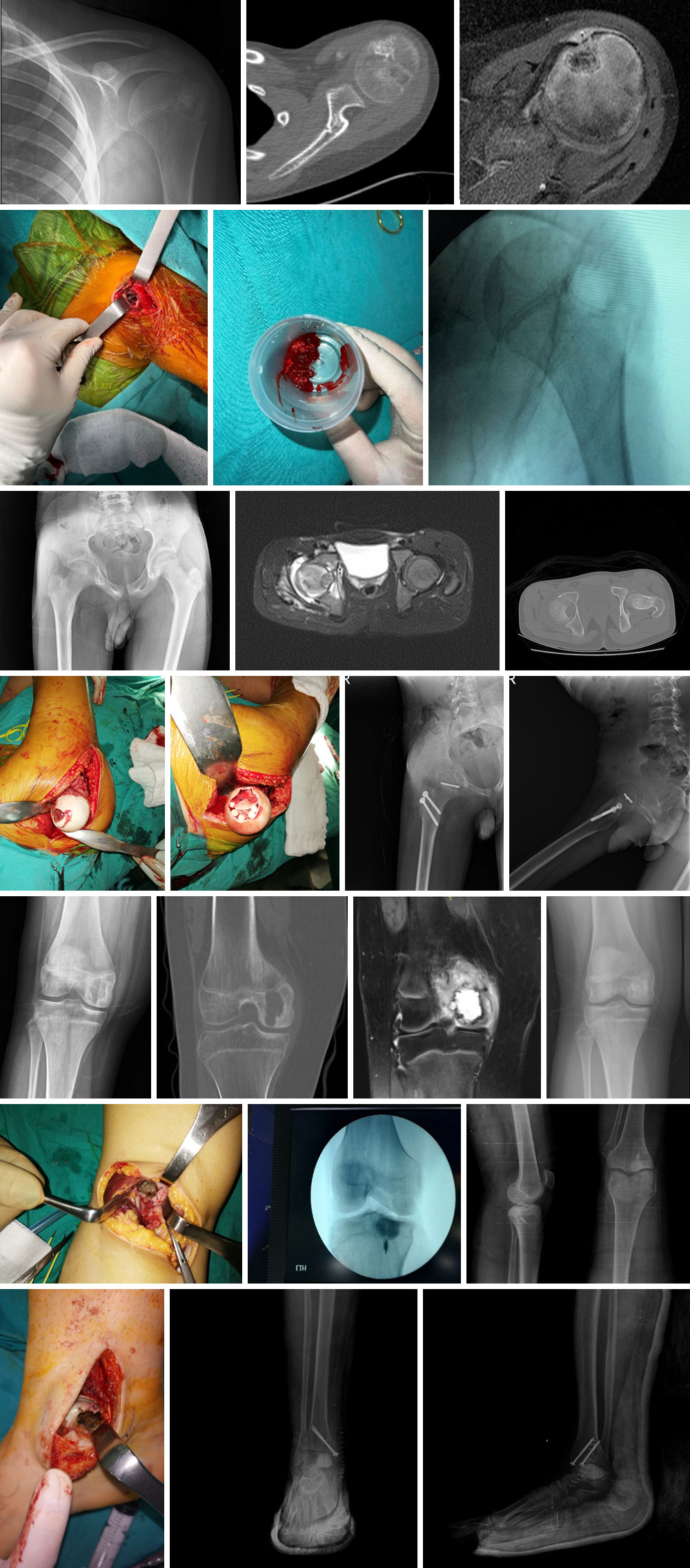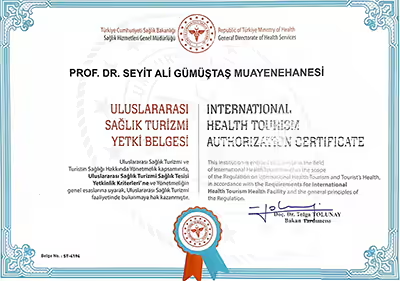CHONDROBLASTOMA-CODMAN’S TUMOR
- Hits: 2302
Chondroblastonm is a rare benign bone tumor of cartilage origin. Also known as Codman’s tumor. The most common age of chondroblastoma is between 10-30 years and it is more common in males (3/2).
Patients with chondroblastoma have long-lasting and mild symptoms. Chondroblastoma presents with pain and swelling in the area where it is located. There is little response to pain medication. Limping may develop with swelling and limitation of movement in the joint where the chondroblastoma is located.
Chondroblastoma is commonly found around the knee (50% distal femur, proximal tibia), hip (proximal femur), and upper arm (humerus).
Chondroblastoma appears on radiographs as a well-circumscribed, lytic lesion 1-6 cm in size in the growth plate (epiphysis, apophysis) of long bones and may be associated with punctate calcifications. The outer part of the bone (cortex) may be enlarged and irregular. Chondroblastoma may extend beyond the growth plate into the joint.
The relationship of the tumor to the joint, bone integrity, and intra-lesional calcifications may be more clearly demonstrated by tomography in patients with chondroblastoma.
In 20% of chondroblastoma cases, the lesion may be associated with cyst formation (fluid levels may be seen on MRI). MRI shows diffuse edema around the tumor.
The differential diagnosis of chondroblastoma includes giant cell tumor, clear cell chondrosarcoma, aneurysmal bone cyst, and Brodie's abscess.
The definitive diagnosis of chondroblastoma is made by pathologic examination. It is important that the physician performing the pathologic examination be experienced in bone and soft tissue tumors.
There is no medical treatment for chondroblastoma. In the surgical treatment of chondroblastoma, filling the cavity formed after curettage of the tumor with graft/cement is the most common method. Local adjuvant application (burr, cautery, phenol, alcohol, etc.) after curettage is recommended to reduce the possibility of recurrence (14-18%). Since the risk of recurrence is high in cases with inadequate surgery, it is recommended that the orthopedic oncologist specializing in bone and soft tissue tumor surgery perform the surgical treatment.
Patients should be followed closely for 2-3 years after surgery due to the possibility of recurrence. During surgery, joint invasion should be avoided.
In the closed method treatment of chondroblastoma, burning the tumor with radiofrequency ablation is an effective method successfully applied.
Chondroblastoma may very rarely show lung metastasis, malignant transformation, soft tissue localization and multiple involvement.


